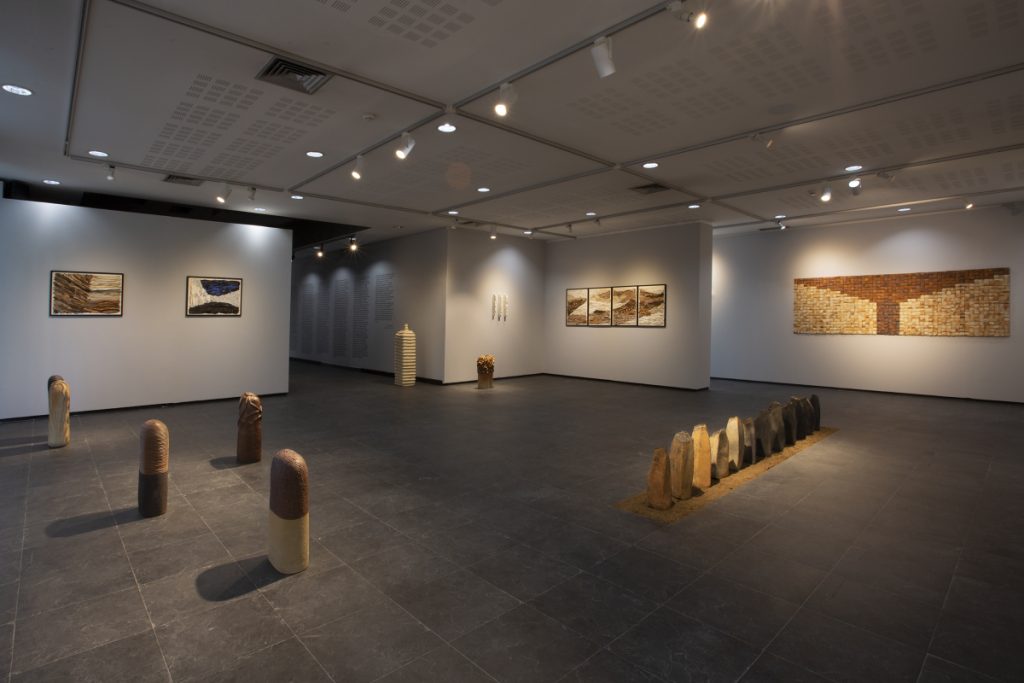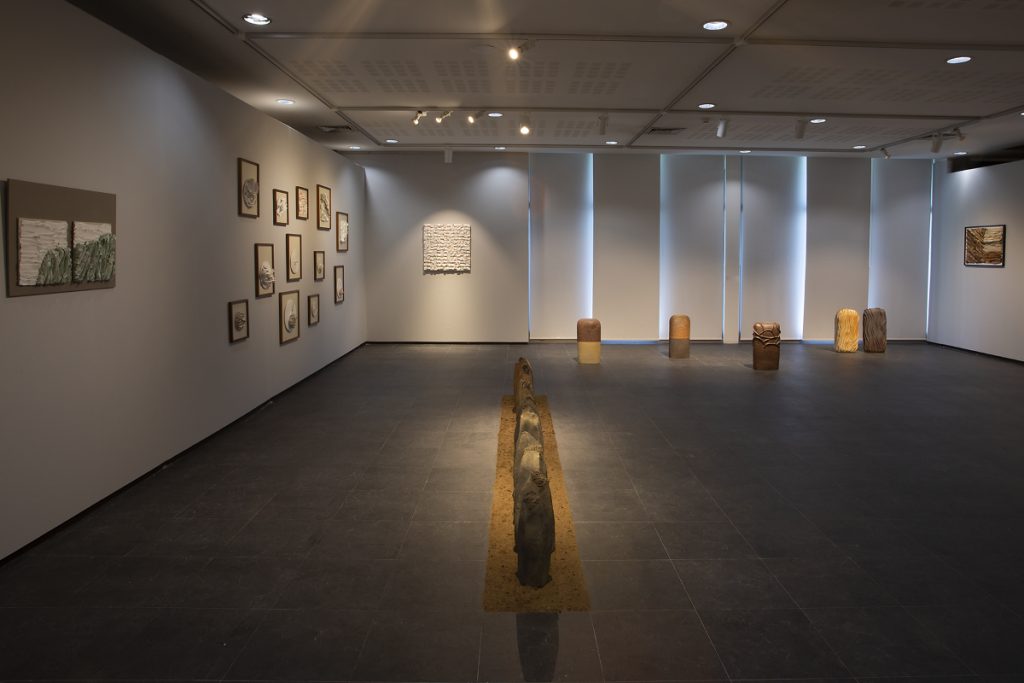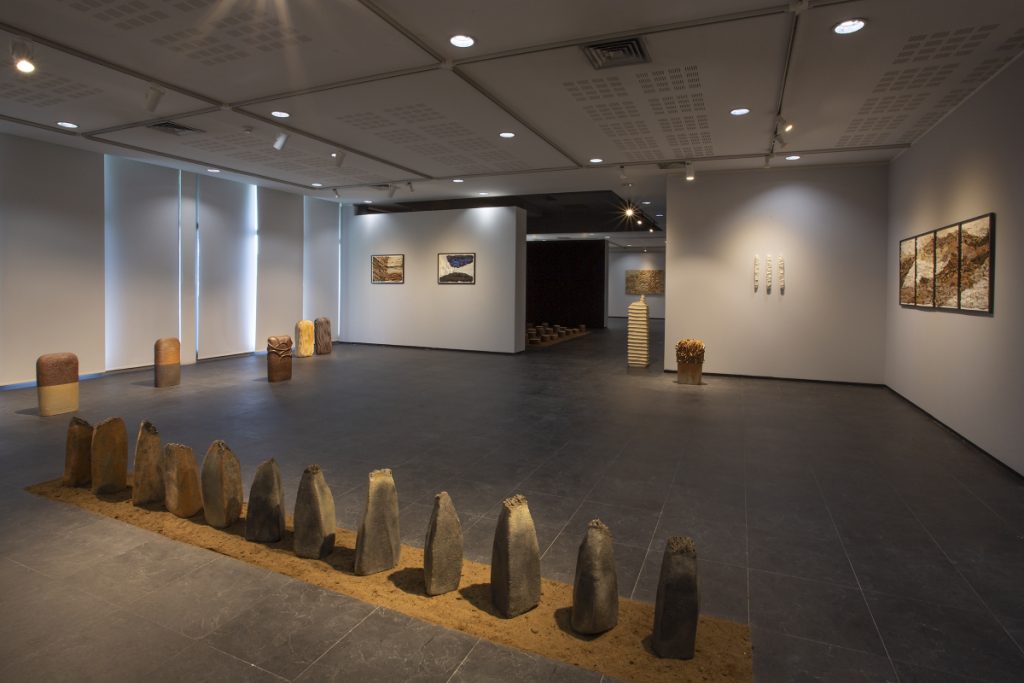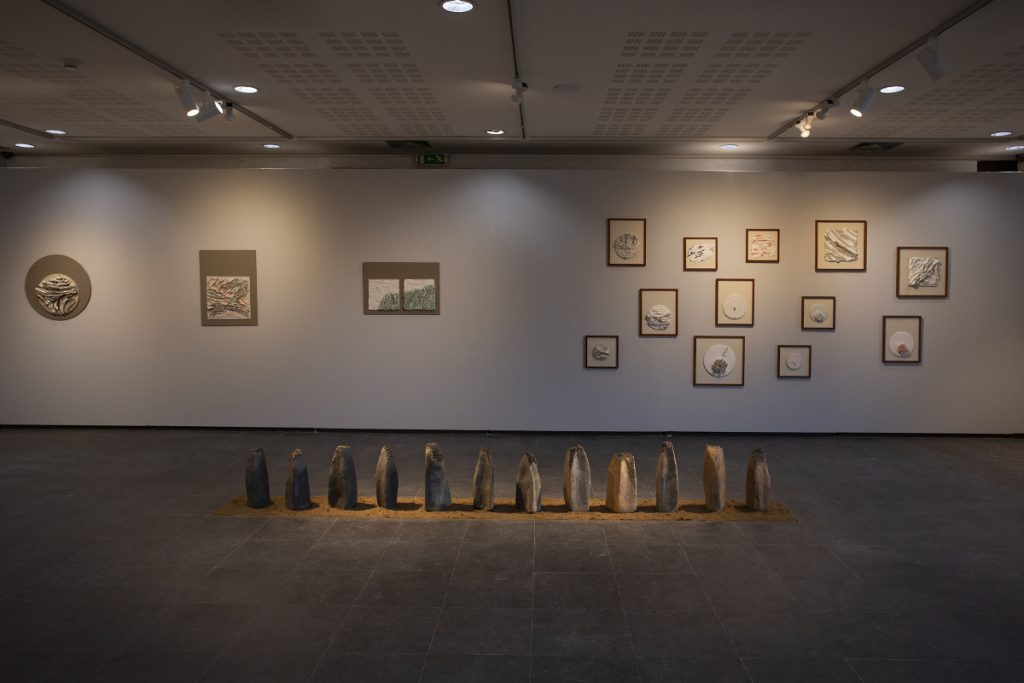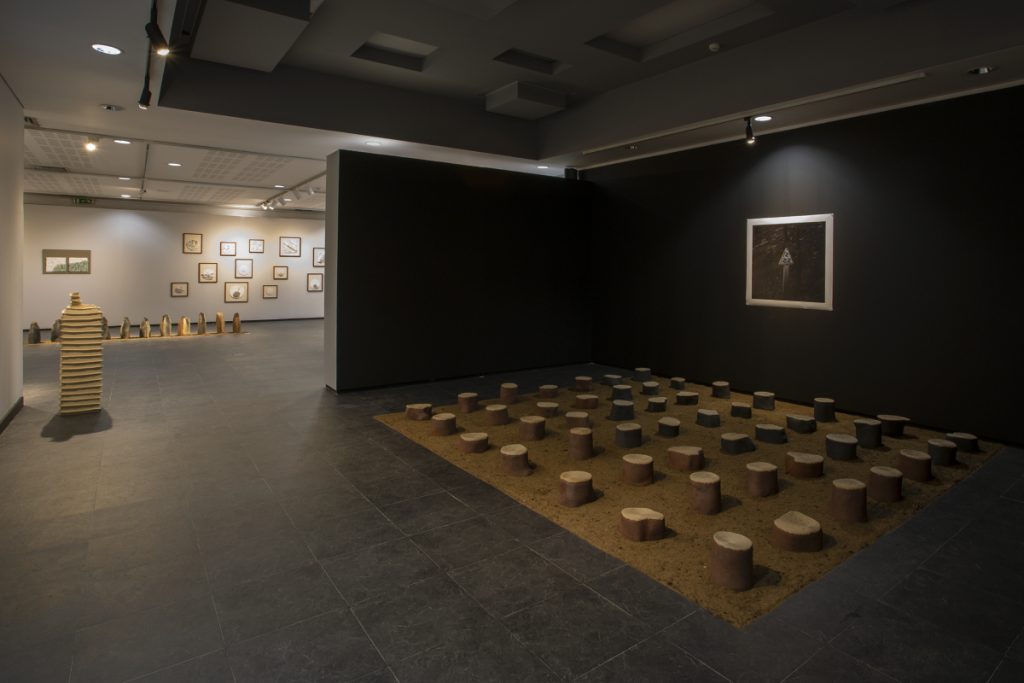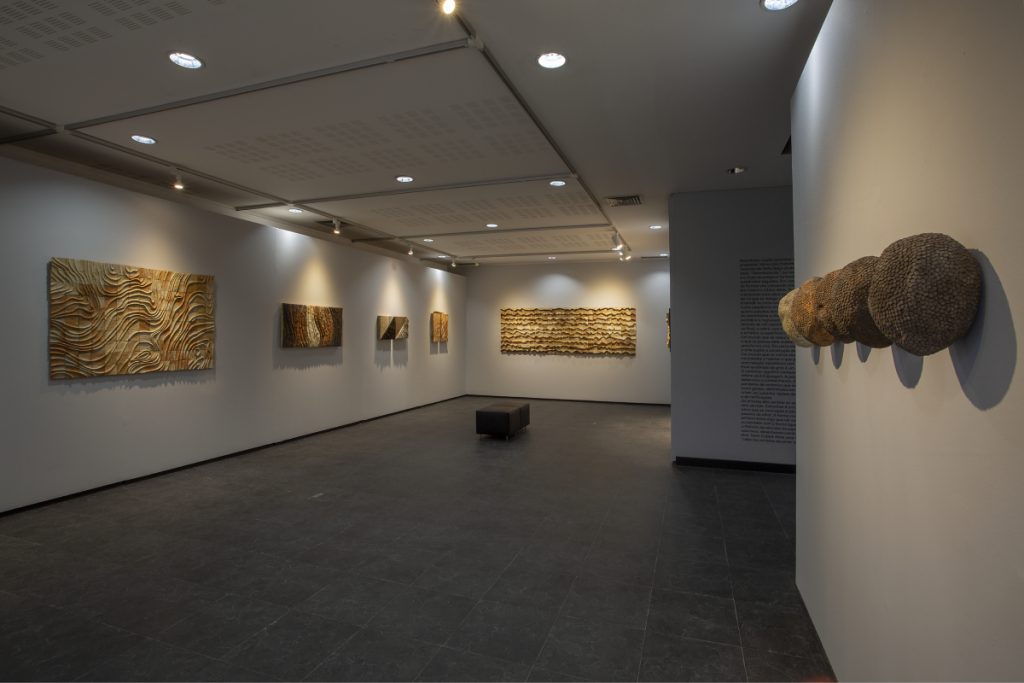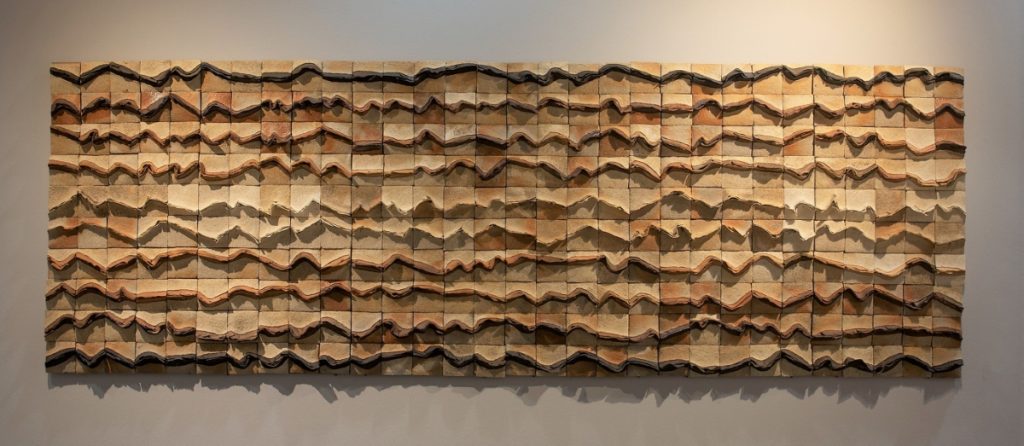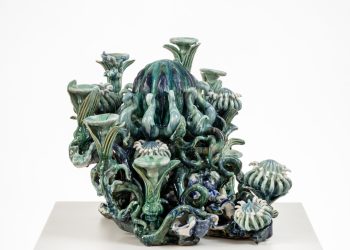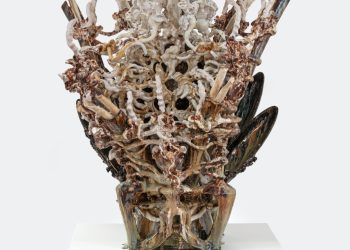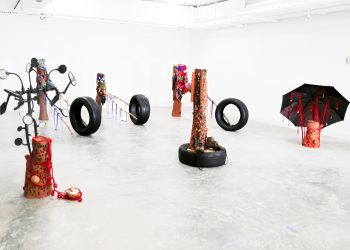Sofia Beça: Que caminho percorres tu (Which path you take), 2019
Que caminho percorres tu, 2019. Exhibition at Loures Municipality Hall, Portugal. Sound collaboration by Jorge Queijo and photography by Rui Pinheiro
Sofia Beça does not stop learning or moving. The experience and philosophy of the Orient were integrated into his work, especially after his recent and intense stay in China. Two important things returned with the artist after this trip: on the one hand, the magical experience of the Chinese landscape, in particular that of the mountains, and on the other hand, the use of porcelain. Under the heading “Made in Jingdezhen”, she presents us with a series of pieces made with this material, which the artist has not used until now. Jingdezhen is the city of porcelain. Much of its population is dedicated to this art. Sofia Beça collected lessons from this tradition, translating them into contemporary language. The artist recognizes porcelain introduced other transparencies, other colors, softer and more abstract, and greater femininity to her work. She also confesses that this led her to territories closer to painting
The territory can be transformed into an object of sacralisation, but also of devastation. The fires that occur in Portuguese (and Galician) forests are one of the most terrible examples of this destruction of nature. The year 2017 was especially tragic. The fire burned an immense mass of forest, destroyed houses and took an overwhelming number of lives. The installation “Floresta Portuguesa” is an elegy dedicated to these trees and to these people. It presents us with a forest of segmented and petrified logs. Among the ghosts of the trees, we see a photograph of Rui Pinheiro, which reflects vestiges of human presence in the midst of desolation. This work, of tragic resonances, shows once again that Sofia Beça is an artist open to life, who wishes to establish her experiences and her commitments through ceramics, and is also open to experimentation and collaboration with other means and disciplines, such as photography or music. The sound environment of Jorge Queijo appears as a key element in this exhibition project that also wants to be collective.
Alejandro Ratia – Art critic / Writer


